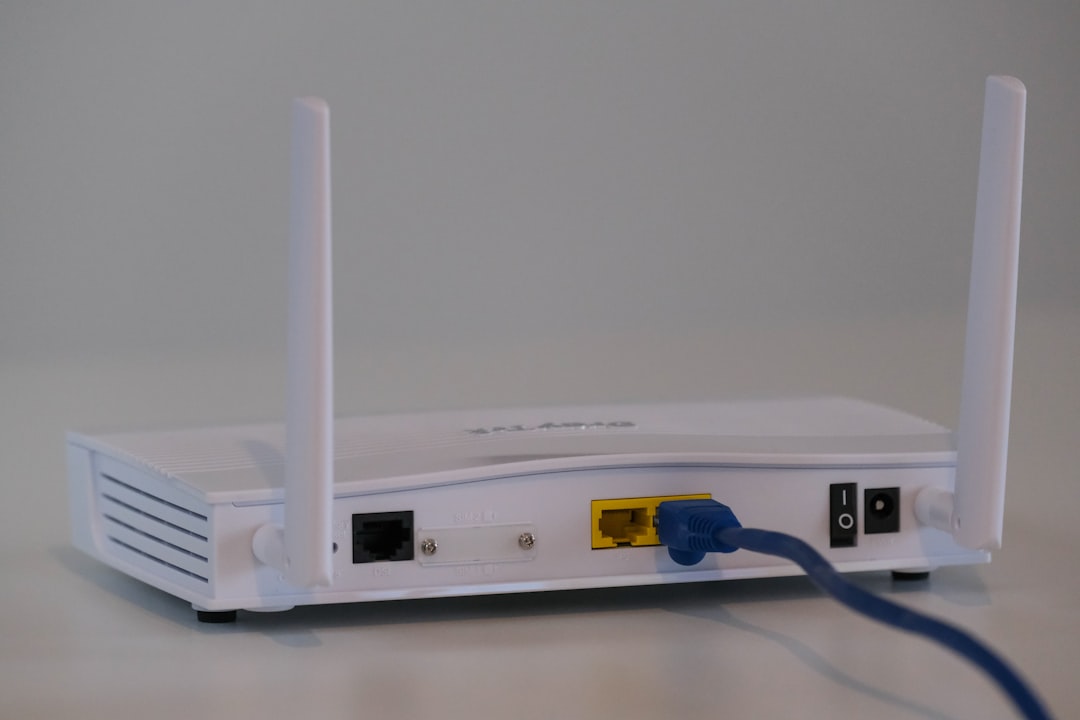Why Your Starlink Wi-Fi Range Matters for Australian Properties
Large blocks, double-brick construction and wide verandahs can all weaken a wireless signal. For regional and remote Australians, those drop-outs mean interrupted business operations, home schooling delays and reduced safety during emergencies. Improving range therefore starts with straightforward, measurable actions:
Quick actions to increase range
- Improve Router Placement Position your router in a central spot within your main living area, raised at least 1.5 metres off the floor and free from furniture or walls that might block the signal.
- Use Mesh Wi-Fi Nodes Adding mesh nodes throughout your home can help eliminate dead zones and create smooth, consistent coverage as you move between rooms.
- Run a Hardwired Connection to Outbuildings If you’ve got a shed, office, or separate structure, running an outdoor-rated Ethernet cable can give you reliable internet without the dropouts of wireless bridging.
- Set Up a Point-to-Point Link For buildings located further away — even up to a few kilometres — directional antennas can create a strong, stable connection when there’s a clear line of sight.
- Raise Your Starlink Dish Mounting your dish higher can help clear nearby trees, roofs, or obstacles, which improves signal quality and helps future-proof your setup as vegetation grows.
The satellite link itself cannot be amplified, so every improvement focuses on the local Wi-Fi network and the physical environment around the dish. With the right accessories, even sprawling pastoral properties can enjoy dependable, whole-site coverage.
Upgrading Your Core Network for Maximum Performance
To achieve true whole-property coverage, the foundational step is to upgrade the core networking hardware. While the Starlink dish provides the internet connection, the standard-issue router can limit signal distribution, especially in large or solidly built Australian homes. By integrating purpose-built SpaceTek hardware from the start, you create a robust network backbone capable of delivering high-speed internet to every corner of your property. For comprehensive insights, explore our detailed guide on boosting your Starlink internet.
Step 1: Implement a SpaceTek Mesh Wi-Fi System
The most effective way to overcome the limitations of a single router is to deploy a mesh Wi-Fi system. Unlike traditional extenders that can halve your bandwidth, a SpaceTek Mesh Wi-Fi System creates a single, seamless network. Start by connecting the primary mesh node directly to your Starlink system using a SpaceTek Gigabit Ethernet Interface. This ensures the mesh network receives the full, unfiltered speed from the satellite connection. Place additional nodes throughout your home to eliminate dead zones and provide consistent, high-speed coverage everywhere.
Step 2: Ensure a Clear Path for the Satellite Signal
The performance of your entire network depends on the quality of the signal received by the satellite dish. Before finalising the installation, it is crucial to find a location with a completely unobstructed view of the sky. Any obstacles, such as trees or buildings, will cause dropouts and reduce speed. Taking the time to survey for a clear line of sight is the most critical step in ensuring a stable, high-speed satellite connection, which is the foundation for your entire network.
How to Increase Starlink Range with SpaceTek Hardware Solutions
1. Outdoor WiFi Access Points
Ideal for:
- Farms, outdoor work areas, events
- Covering large properties with seamless WiFi
We use high-performance access points that are weatherproof and built for long-range use. Installed strategically, they can create a mesh of connectivity around your entire site.
2. Starlink Router Upgrades
The standard Starlink router is great for simple setups — but if you’re after more coverage, speed, or control, we offer robust router upgrades that plug directly into your Starlink system.
Our routers come with:
- Better range
- Stronger signals through walls
- Improved device handling for homes with lots of users
3. Directional Antennas & Mounting Solutions
Need Starlink on a shed, remote cabin, or office a few hundred metres from the main building? We offer custom directional antenna setups that extend your signal from point A to point B — no cables required.
We’ll even handle custom mounts to get you the perfect signal.
4. Full Property WiFi Mapping & Custom Install
Not sure where the dropouts are coming from? We can help with a full site inspection and WiFi mapping to identify weak spots — and build a setup that gives you complete, reliable coverage.
The Critical Role of Dish Placement in Overall Performance
While extending local WiFi range is important, the quality of the internet connection originates at the Starlink dish. The dish is the primary receiver of the satellite signal, and any degradation at this point will impact the entire network, regardless of the internal WiFi setup. For Starlink in Remote Australia, optimising dish placement is a necessity. For detailed insights, consult our guide on what is the ideal location for installing my Starlink dish.
Why a Clear View of the Sky is Non-Negotiable
The Starlink system relies on an unobstructed view of the sky to maintain a stable connection with its satellite constellation. Any physical blockage can cause significant performance issues.
- 100-Degree Field of View: The dish requires a clear 100-degree field of view. From its perspective, no trees, buildings, or other structures should impede its operational cone.
- Signal Dropouts and Slow Speeds: Even partial obstructions cause signal dropouts, increased latency, and reduced speeds. Moving a dish just a few metres to avoid a partially blocking tree can improve speeds by 20-30%.
- Latency Issues: Obstructions can force the dish to connect to less optimally positioned satellites, increasing signal travel time and latency, which is highly noticeable in applications like video calls or online gaming.
Carefully surveying the location for potential blockages is essential for guiding placement. Ensuring a clear view of the sky is the most fundamental step to guaranteeing the best possible internet signal. For more advice, explore our tips to steer around dish obstructions.
How to Increase Starlink Range by Elevating Your Dish
Elevating the Starlink dish is often the most effective strategy for achieving a clear view of the sky, particularly for Starlink for Remote Communities where trees and undulating terrain are common.
- Clearing Ground-Level Obstructions: Mounting the dish higher clears common obstructions like fences, sheds, and low-lying vegetation.
- Avoiding Future Growth: For properties with trees, elevating the dish above the canopy can prevent future obstruction issues from tree growth.
- Improved Signal Stability: A higher mounting position results in a more stable and consistent signal, which translates directly to better speeds and fewer outages.
Choosing Mounts Designed for Australian Conditions
Standard mounts are often insufficient for the unique and harsh conditions found across the continent. When selecting a mounting solution, it is imperative to choose one designed to withstand Australia's extremes:
- Cyclonic Winds: Mounts must be engineered with heavy-duty materials capable of resisting the immense forces of cyclonic winds common in northern Australia.
- Extreme Heat: Materials must maintain structural integrity and resist warping under prolonged exposure to intense sun.
- Corrosive Coastal Air: For coastal properties, mounts require rust-resistant materials and coatings to protect against salt-laden air.
- Wildlife Protection: Robust construction and secure cable management can help deter interference from Australian wildlife.
- Long-Term Reliability: Investing in a high-quality, rust-resistant mount ensures the foundational stability and long-term reliability of your Starlink connection, reducing the need for future maintenance or replacement.
SpaceTek Australia provides mounting solutions that are not just hardware, but an investment in the stability and longevity of your Starlink internet connection, engineered specifically for the rigours of the Australian landscape.
Frequently Asked Questions about Extending Starlink Range
This section addresses frequently asked questions about how to increase Starlink range, reflecting the common challenges faced by users in rural and remote Australian communities.
Can I use a standard WiFi extender to increase Starlink range?
While standard WiFi extenders may seem like a simple solution, they often create more problems. These devices typically establish a separate network, forcing users to switch connections manually as they move around a property. More significantly, traditional extenders retransmit the WiFi signal on the same frequency, which can halve the available bandwidth.
For these reasons, mesh systems offer a superior alternative. They create a single, unified network that intelligently manages device connections without the significant bandwidth penalties of standard extenders. When correctly configured, mesh systems maintain speed while eliminating dead zones. Standard extenders may be adequate for covering a single, small area but are not recommended for comprehensive, property-wide solutions.
How far can I realistically extend my Starlink WiFi signal?
The achievable range depends entirely on the chosen extension method and property layout.
- Indoor Coverage: Mesh systems can effectively cover large, multi-storey homes of several thousand square feet with seamless connectivity when nodes are placed strategically.
- Wired Connections: Wired Ethernet connections reliably extend a full-speed signal up to 100 metres, ideal for nearby sheds or workshops. The limitation is based on Ethernet cable standards.
- Wireless Bridges: For long-distance extension, point-to-point wireless bridges can transmit signals across distances exceeding 1000 feet. With a clear line-of-sight, advanced configurations can span several kilometres, making them perfect for large rural properties.
The critical requirement for wireless bridges is an unobstructed line-of-sight between antennas. Proper mounting solutions are crucial for elevating antennas to achieve this and ensure a stable connection.
Does extending my WiFi range slow down my Starlink internet speed?
The impact on internet speed depends on the quality of the extension solution. Poorly implemented extenders can introduce significant latency and reduce bandwidth. In contrast, well-designed systems maintain speeds close to the original source connection.
- High-Performance Solutions: Well-configured mesh systems (with a wired primary node) and direct Ethernet connections preserve Starlink speeds effectively. High-quality wireless point-to-point bridges are also designed for minimal speed impact, provided there is a clear line-of-sight.
- Low-Performance Solutions: Standard WiFi extenders often create bottlenecks due to their inefficient signal relay methods, causing noticeable slowdowns during high-demand activities.
The importance of source signal quality cannot be overstated. The most critical factor is the signal from the Starlink dish itself. If the dish has an obstructed view, extending its degraded signal will only spread poor performance over a wider area. Optimising dish placement with a robust mounting solution is the foundation of any successful range extension project.
Connectivity Without Compromise
Successful range extension is built on three pillars: a clear satellite path, quality SpaceTek mounting hardware and the correct in-house distribution system. By combining these elements you safeguard productivity, study and entertainment—no matter where your property line ends.
For custom advice, specifications or a formal quotation, contact the engineering team at SpaceTek via https://spacetek.com.au/pages/contact.
External resources: The Australian Communications and Media Authority (ACMA) offers up-to-date information on satellite spectrum management and consumer safeguards – see https://www.acma.gov.au/ for further reading.
With purpose-built, Australian-made accessories, your Starlink service performs exactly as intended—fast, reliable and ready for the harshest environments.




Leave a comment
This site is protected by hCaptcha and the hCaptcha Privacy Policy and Terms of Service apply.